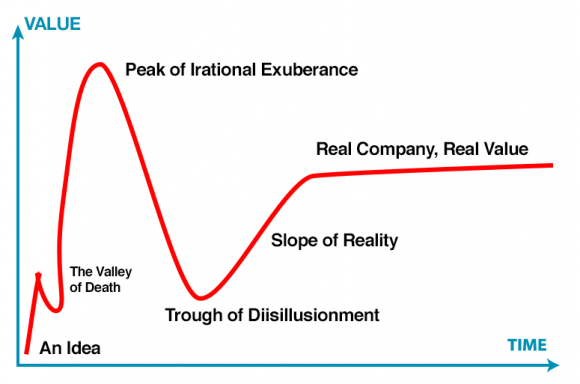
There are so many lessons in startups, startup investing, and technology adoption that come from looking back a few decades.
For example, I’m out of the 1970s nostalgic computing rabbit hole, but that journey has subsequently led to reviewing the technological progress of the late 1900s and early 2000s. This week, that was the rise of the RISC-based CPU, which was then obviously going to replace the traditional chips like the 8086, 80386, etc.


I remember following the details of this technology revolution while still an undergraduate in the early 1990s, and through that whole decade. I was working at IBM when the AIM alliance was formed, when Motorola agreed to throw away both their 68000 and 88000 to help IBM win the market with the PowerPC architecture. I was at my first startup, Nimble, where we wrote code on the AT&T Hobbit, an early MIPS processor, and an early commercial ARM chip in the Apple Newton. And I had forgotten about PA-RISC and a few other players, the HP alliance, and the big worry that Intel’s Itanium leapfrogging RISC.
Thirty years later of hindsight later, nearly all of this effort was a waste of time. Thirty years later the vast majority of notebooks and servers are still using a derivative of the Intel 8086 and the nearly every cellphone is using a high-complex derivative of the ARM. So complex that if you took today’s M3 back to 1990 it would look orders of magnitude more complex than even the VAX, the most CISC of the CISC CPUs of the day.
My take-away from this review is that “good enough” won the day. Intel continues to sell x86 chips because the x86 was always good enough for the job it was asked to do. Other chips were not ten times better. ARM took the lead in mobile CPUs because it was a good enough CPU in terms of speed and capabilities, but better in terms of power consumption. Just good enough to run on the batteries of the day.
Those “good enough” abilities put the two leaders in a position where more sales led to more R&D to keep their chips good enough as technology progressed, with more scale leading to more scale leading to the two-winners-take-all market we have today, albeit with ARMs market being so much larger than Intel’s that we could see ARM being the 99% CPU design in the 2030s or 2040s.
The lesson to learn is putting yourself in the shoes of Sparc, PA-RISC, PowerPC, Alpha, and Itanium, which all out-performed both the x86 and ARM, but where all failed as products. The lesson is that better doesn’t always win. Not when the competition is “good enough” for the customers.














